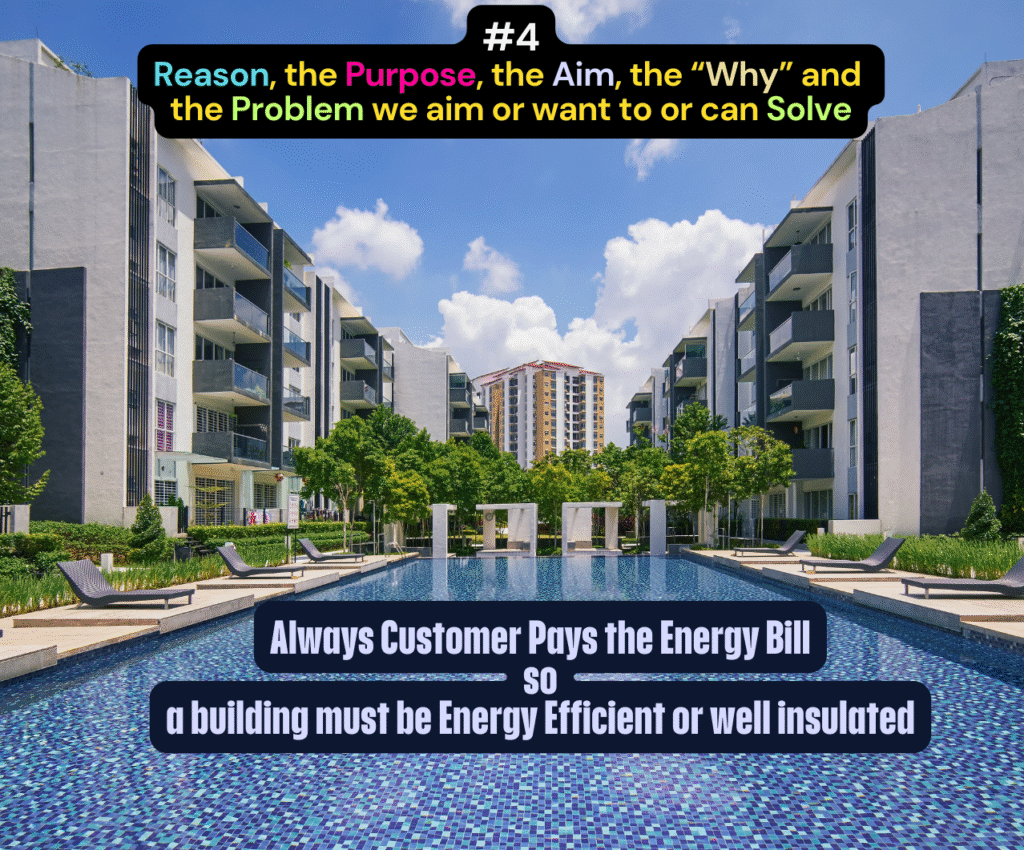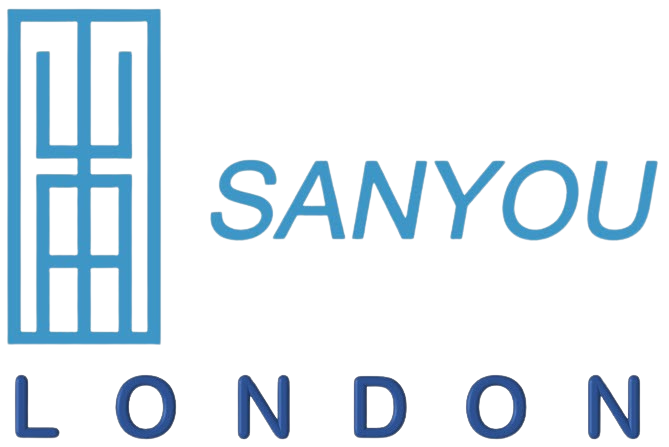
Sell the spec, not the slogan: how developers turn insulation into a unique selling point
A plain question you’ll hear on every viewing
Buyer: “Your brochure looks lovely—but how is this building actually made?”
If your team can only point at finishes, you are leaving trust—and money—on the table. People buy kitchens and views, yes; but they live with energy bills for decades, including their pension years. The strongest answer is a clear specification that makes running costs predictable.
The shift: from glossy adjectives to measurable performance
Buyers are increasingly asking for facts, not adjectives:
- What is inside the external wall?
- How is the façade insulated without stealing floor space?
- What have you done at the windows besides a tinted glass?
- Can I see the expected running cost at a typical set-point?
A truth-in-spec approach becomes your USP: vacuum-insulated walls, decorative integrated façade panels, window-line treatments, and optional heatable curtains for zoned comfort. It is precise, understandable, and valuable.
Why vacuum insulation reads well on a spec sheet
- Thin build-ups, big results. Vacuum Insulation Panels (VIPs) achieve very low conductivity at small thickness, so you keep net internal area while strengthening the envelope.
- Design-grade façades. Decorative Integrated VIP (DVIP) combines a weatherable architectural face with high insulation—fire-class options available—so “beautiful” and “efficient” appear in the same line item.
- DIY-friendly upgrades for occupants. Vacuum Insulated Wallpaper (VIW) and Vacuum Insulated Curtains (VIC) give residents simple ways to enhance comfort without invasive works.
- Optional zoned warmth. The Vacuum Insulated Heatable Curtain (VIHC) adds gentle radiant heat at low power for evening comfort without touching plant.
Result: you can claim substantial reductions in heating and cooling demand at like-for-like depth, often translating into lower operating expenditure (OPEX) and calmer interiors that feel comfortable at modest thermostat settings.
Turn insulation into a sales story buyers believe

1) The five-minute show-flat dialogue
- Point to the wall mock-up: “We use a vacuum layer in the envelope to slow heat entering in summer and leaving in winter. That is why this room feels even without the system blasting.”
- Demonstrate at the window: draw the sample VIC panel and let the viewer stand beside the glass; the radiant chill drops immediately.
- Open the spec folio: highlight DVIP on the façade sheets; note the finish options and fire class.
- Show the cost card: a simple monthly OPEX estimate for a 2-bed unit at a realistic set-point and tariff.
- Offer future-proofing: “If tariffs move, your envelope already does more with less.”
2) Marketing assets that carry weight
- Cutaway diagrams of wall and façade build-ups with clear labels.
- Thermal camera stills from a pilot unit: day vs night, curtain open vs drawn.
- Quiet-room test: record background noise levels—vacuum-insulated envelopes often reduce road noise, a bonus families notice.
Developer economics: where the margin hides
- Net internal area retained. Thin insulation avoids thick stud lines; over a stack of apartments that protects sellable square metres.
- Smaller plant, calmer peaks. Reduced loads support tighter plant sizing and fewer peak complaints to the managing agent.
- Sales velocity and resale. Energy-efficient units tend to list with stronger EPC results and can move quicker in competitive markets; buyers understand “lower running costs” instinctively.
- ESG and lender comfort. Clear performance specs support green finance, sustainability disclosures, and institutional buyer due diligence.
A simple, credible OPEX card for your brochure (illustrative)
Assumptions: typical two-bed flat; moderate climate; standard occupancy pattern.
- Vacuum-insulated envelope: lower monthly space-conditioning energy at the same comfort level compared with a thick conventional build-up.
- Window treatment drawn during evenings: further reduction in night losses or gains.
- Optional VIHC in living room: soft zoned warmth for evenings at modest cost.
Present it as a range with assumptions. Buyers respect transparency.
Procurement language you can lift into a tender
- External wall / façade: “Provide decorative integrated vacuum-insulated panel system with architectural finish; declare thermal performance, fire classification, surface durability, and fixing details. Coordinate junctions to maintain insulation continuity at slab edges and openings.”
- Window line: “Provide provision for vacuum-insulated curtain track and side returns to reduce edge leakage; where specified, include heatable option with safety controls and documentation.”
- Internal upgrades: “Allow for vacuum-insulated wallpaper to cold-facing internal partitions in model units; provide substrate preparation and adhesive schedule.”
- M&V note: “Provide pre-handover air-tightness and thermal imaging report on 10% of units; include commissioning data pack and occupant guidance.”
Answers your sales team can deliver without calling engineering
Q: Why vacuum instead of simply thicker foam?
A: Space. Vacuum achieves high performance in millimetres, preserving floor area and detailing around reveals.
Q: Is it fragile?
A: It is protected within the panel or curtain assembly. We design fixings and edges so it behaves like any premium building component.
Q: What happens if tariffs rise later?
A: The envelope keeps doing its job. Better insulation is a one-off hedge against future price swings.
Q: Can the buyer add more later?
A: Yes—DIY options such as VIW or VIC are compatible with the base build and do not require builders.
Positioning ideas for your brochure and hoardings
- Headline: “Engineered to be lived in—vacuum-insulated comfort that costs less to run.”
- Badge set: Vacuum-Insulated Walls | Design-Grade Façade | Quiet, Stable Interiors | Window-Line Thermal Shield
- Callout: “Ask to see the insulation mock-up; we will show you what sits behind the paint.”
Hand-over pack for managing agents
- One-page operating guide: when to draw window treatments for best results; simple ventilation advice.
- Service ticket template: how to report a damaged panel or track; swap process for curtain inserts.
- Seasonal tips: shoulder-season settings that keep comfort high and noise low.
Where to deploy each product in a typical scheme
- Core shell: VIP in tight build-ups; DVIP on façades needing a finished appearance and specific fire class.
- Show flats and premium tiers: VIC at large panes; VIHC in living rooms for zoned evening comfort.
- Standard tiers / options list: VIW offered as a buyer upgrade for cold-facing rooms.
- Back-of-house: VIP in doors, risers and plant housings where thickness is constrained.
The message to put on the back cover
“Luxury is not only marble; it is comfort you can afford to keep.”
Give buyers a structure that stays comfortable with modest energy. That is a promise people remember long after the brochure goes in a drawer.
Ready to make insulation your USP?
- Contact our Customer Service Team for specification support, samples, and unit-level OPEX cards tailored to your scheme.
- Prefer a direct conversation? Email or phone Professor Saim Memon to align your design, sales story and commissioning plan.
- Explore full product specifications, purchasing steps, videos and FAQs at www.sanyoulondon.com.
Sell the spec. Buyers will thank you for it—on day one, and every month the bill arrives.
Share

Author
Prof. Dr. Saim Memon
PhD, CEng, FHEA, MSc, BEng(Hons), PGC-TQFE, GTCS, MCMI, MIET, MIEEE, MInstP, IBPSA, APCBEES, MPEC
CEO | Industrial Professor | Inventor | British Scientist | Chartered Engineer | Qualified Teacher | Chief Editor | World Speaker | Pioneer in Vacuum Insulation Energy Technologies

